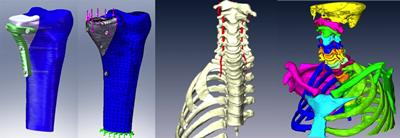Dr Christopher W.G. Phillips MEng, PhD
Visiting Researcher

Chris graduated with a Masters in Mechanical Engineering (2009) and a PhD (2013) from the University of Southampton. Since then he has been awarded an EPSRC Doctoral Prize and continues to work as a Visiting Researcher.
During his undergraduate degree he developed an interest in bioengineering; modelling fracture fixation plates for his individual project and developing an anatomical CAD model of a spine during an internship. His final-year project by contrast involved modelling and analysing the stability characteristics of a recumbent bicycle, which was being designed to break the land speed record.
Aspiring to combine his interests in both biomechanical and performance sports engineering, he embarked on a PhD in the Performance Sports Engineering Laboratory (PSEL) under the supervision of Professor Stephen Turnock, Dr Alexander Forrester and Dr Dominic Hudson.
In 2013 he successfully defended his PhD thesis entitled Analysis of Human Underwater Undulatory Swimming Using Musculoskeletal Modelling. This work included developing experimental image and data acquisition systems, computational musculoskeletal modelling of underwater swimming, and parametric optimisation using surrogate modelling. This culminated in a process that provides the ability to perform quantitative evaluation and comparison of different swimming techniques.
Part-funded by UK Sport, this research additionally lead to providing engineering support and analysis, as part of a team from the PSEL, to British Olympians in the build-up to the London 2012 Olympic Games. The contribution of projects such as these, over several decades, saw the PSEL recognised for its contribution to performance sport with the awarding of the Queen’s Anniversary Prize in 2011.
Following graduation Chris was awarded an EPSRC Doctoral Prize that has enabled him to build on his previous research of musculoskeletal modelling in addition to continuing to provide support to British Olympians. This new project involves developing a detailed computational model of the hand as part of a cross-disciplinary project involving academics in the Faculty of Health Sciences and clinicians at the University Hospital. The purpose of the project being to better understand the functional anatomy predominantly of the finger joint and to identify failure mechanisms associated with replacement of these joints.




